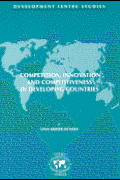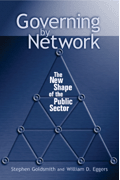This spring, the U.S. Department of Energy (DOE) is launching a new Clean Energy Manufacturing Initiative that will support both clean energy and manufacturing competitiveness by promoting greater energy efficiency in the U.S. production sector. Rolled out at Oak Ridge National Laboratory (ORNL) in Tennessee last month, the new initiative advances a smart take on both the nation’s energy and manufacturing strategies. But more than that it reflects a welcome new spatial and geographic emphasis at the Energy Department.
At the most general level, the new initiative marshals a number of DOE offices, research institutions, and private sector partners to map out and implement networks that promote clean energy production and energy-efficient manufacturing. Key to the effort is that this new push—like the Obama administration’s National Network for Manufacturing Innovation (NNMI) proposal—takes an explicitly regional approach to innovation and the diffusion of next-generation technologies.
In this respect, the initiative aims to engage with regional epicenters of advanced manufacturing such as smart automation in Austin, Tex. and low-heat stamping in Denver, Colo. to drive local and national advances. These areas have established production ecosystems and are driving the technological frontier within clean energy; they are prime sites of U.S. innovation. Along these lines, the initiative has already awarded a total of $15 million to five projects in five different regional manufacturing clusters.
Yet the new focus is not just about covering the geographic bases. By supporting centers of excellence close to regional industrial clusters, DOE is leaning on a large body of literature that suggests innovation results from an iterative set of exchanges between production and research activities that more often than not thrive on proximity.
To be sure, old-line thinking continues to maintain that R&D facilities develop prototypes out of whole cloth and then transfer design requirements to manufacturers, wherever in the world plants are located. However, while this may be the case for low-tech industries, the reality for advanced industries is often the other way around. The genesis of many new technologies comes from within the production process via daily interactions with production facilities. These “co-location synergies” emerge as manufacturers adopt new techniques and equipment to increase efficiency and R&D engineers build upon shop-floor technological competencies to create innovate products and services. And within strong regional clusters, particularly metropolitan regions, such co-location benefits are able to penetrate beyond the incumbent R&D performing firm into the local supply chain—creating high-value start-ups and upstream innovation.
And in fact the ORNL launch event highlighted all of this. Led by Assistant Secretary for Energy Efficiency and Renewable Energy (EERE) Dave Danielson with Tennessee Gov. Bill Haslam in attendance, the event highlighted both a very cool DOE facility—the Carbon Fiber Technology Facility (CFCF) at ORNL—and EERE’s emergent regional stance. CFCF is a production line-sized test bed for public and private sector researchers to explore new carbon fiber composites at scale. As such, it offers to both East Tennesssee and the nation a one-of-a-kind piece of shared industrial infrastructure as well as a focal point for local technical exchange. Currently, for example, 45 firms make up the carbon fiber composite consortium that work with CFCF researchers—many of which are small-and medium-sized firms located in East Tennessee. In that way, the CFCF is emerging as the hub of an nascent “industrial commons,” where firms of all sizes can leverage not only CFCF resources but the broader R&D infrastructure at Oak Ridge, the University of Tennessee, and in firms. In other words, the carbon fiber hub and cluster being fostered in East Tennessee—like Austin and Denver—epitomizes the increasingly “bottom-up” feel of U.S. and global innovation systems and likewise highlights a new region-oriented stance at DOE.
While it’s too early to judge the impact of the Energy Department’s Clean Energy Manufacturing Initiative, the new push looks promising. By focusing more of DOE’s efforts on regions, a historically isolated, sometimes obtuse agency may be beginning to align itself with some of the most dynamic technology development exchanges of all—those that happen locally.








Commentary
DOE’s Clean Energy Manufacturing Initiative Leverages Regions
May 6, 2013